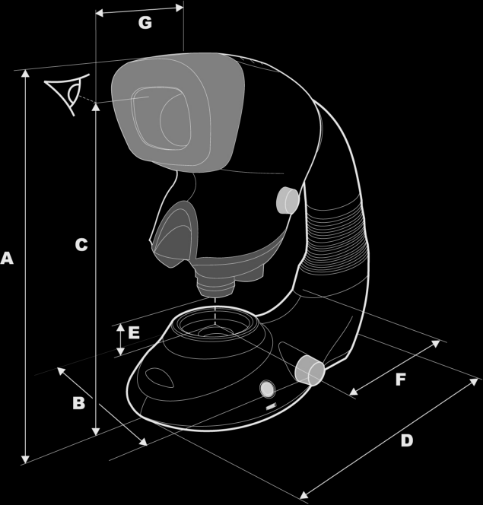FAQ’S
General Faq’s
Currently you can’t buy online, but we do have over 120 stock holding distributors around the world. Please contact us to find out your nearest authorised distributor.
Yes, all Vision Engineering products come with a warranty. This is usually held for a year after the product has been purchased. For more information, please see our warranty statement.
If you did not purchase directly from Vision Engineering, you may find that our distribution partners offer different warranty periods. If this is the case, you will need to discuss this with them directly.
We like to keep all of our customers up to date with new products and existing product information. Join our mailing list.
There are a number of ways you can get to see a product demonstrated.
- You can visit our tradeshow pages which tells you were we are exhibiting around the world.
- Contact us and find your nearest distribution partner. Some have showrooms and will be happy to demonstrate a product for you.
- Request a demonstration at your place of work.
Product Faq’s
- Benchkam
- Circus LED
- DRV-Z1
- EVO Cam II
- Hawk Duo
- KFM LED
- LFM LED G2
- LVC series
- Lynx EVO
- Mantis
- Swift Pro
- SX-Series
- TIM5
- TVM-Series
- Wave LED
Yes. it is possible to get measurements using Lynx EVO in the same way as can be achieved with other stereo microscopes. These are typically; via the use of a graticule or via the use of the optional camera module and measurement software
Yes. The Camβ can be used with the supplied HDMI cable to connect direct to a monitor to allow users to share images with an audience. Useful for training and demonstration.
Yes, Mantis Elite has an optional centre point illuminator which shines light down the optical path and can be used to illuminate blind holes so all the details can be clearly seen
Yes. A polariser and analyser are available for incident light.
Yes. The optical design of the Lynx EVO head projects the image into the users eyes. If the user wears task specific eye glasses these can be worn to correct the users sight without affecting the performance of the Lynx EVO. In the same way safety glasses and can also be worn during use.
Yes. it is possible to add the STAYS lenses to the magnifiers to increase the magnification. The maximum total magnification possible is 4.75x
Lynx EVO includes a detent which can be set at any point within the zoom range. The detent works as a physical marker that if felt as the zoom control moves past it. Like a click stop, the detent causes the zoom to click into the set magnification before the user can zoom past in either direction ensuring the user returns to the same place time and again
Lynx EVO utilises patented dynascope technology to project stereo images into the users eyes.
Mantis is a stereo microscope, without eyepieces. Twin optical paths pass through the patented optics of Mantis, exiting the single viewing lens as separate (stereo) optical paths, just as they would with a conventional stereo microscope. The operator sees a stereo image with high contrast and high resolution.
As with all microscope systems there is a reduction in Field Of View (FOV) of what the camera sees, compared to what you would see through Mantis Elite-Cam HD. The view through Mantis optical head is a circular area, whereas the camera image is a rectangle.
Vision Engineering is certified to ISO 17025, so the measuring systems we supply are calibrated before they leave our premises. The period of calibration depends on the quality systems of each customer, although we recommend calibration/validation every 12 months.
Yes. The Mantis Elite-Cam HD is supplied with the ViCapture software. This allows image and video capture as well as annotation, saving and recall of settings and for overlays to be applied to the image.
The edge clamp has an opening of appoximately 55mm. If a desk is too thick for the edge clamp, table bushing and surface mounts are also available
Dioptre is the most common unit used for expressing magnification for low magnification optical systems sich as bench magnifiers. It is the same term as is encountered at the optician when calculating magnification for spectacles. 1 dioptre adds 0.25x in magnification. So 3D (3 dioptres) is normal magnification plus 3 lots of 0.25 = 1.75x.
Ring-lights are great for giving even illumination and allowing every detail to be seen clearly. 3D lighting allows the introduction of a controlled amount of shadow which helps the brain understand depth within the image.
- Field of view. Mantis Elite has a larger field of view than Mantis Compact
- Magnification Range. Mantis Compact goes up to 8x and the Mantis Elite goes up to 20x
- Mantis Elite allows two lenses to be fitted on a quick change turret so users can rapidly switch between low and high magnification
The field of view is dependent on the magnification at which you are viewing and the objective lens that you are using. The widest field of view will be achieved with a lower magnification objective. Field of view reduces as magnification increases. Please refer to the optical data for full details.
This depends on the size of the monitor. The maximum magnification on standard LVC machines with a 25” monitor is 370x, whilst LVC+ models could go up to 700x.
The shadeneck is the design feature which covers the neck mechanism with a special gator to prevent FOD falling on the subject. The shadeneck removes the need for locking screws and knobs as it perfectly balances the head whatever the position.
The choice of objective lenses will depend on the application and on user preference. In general, when viewing or inspecting objects, it is advantageous to see more of the sample (i.e. have a larger FOV) and have a large depth of focus. Depending on the size of the subject, these requirements may indicate that the lower magnification (4x and 6x) lenses will be the most useful for inspection work and the higher magnification (≥8x) lenses more useful when more detailed work is required.
Sign up for service/ calibration




